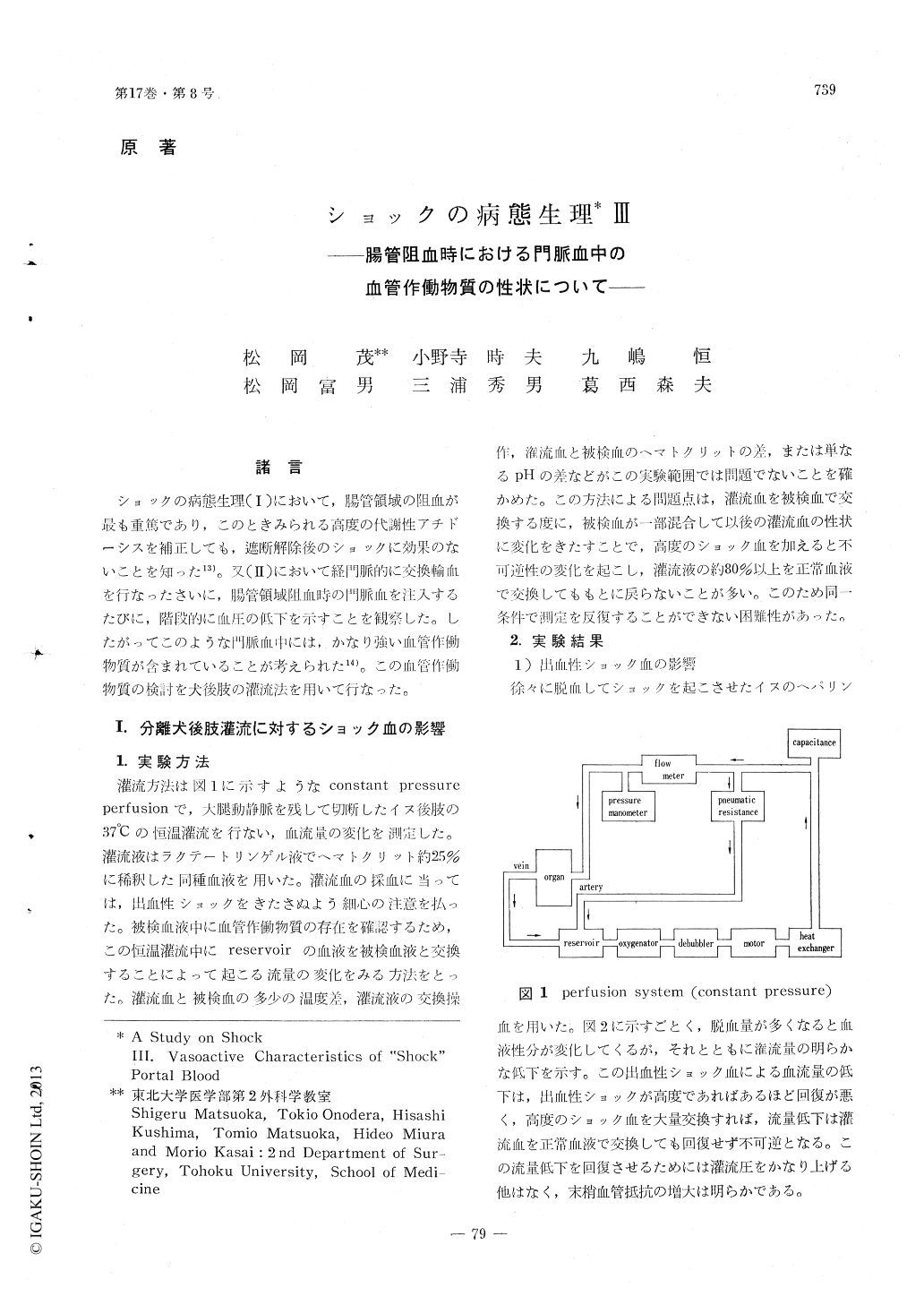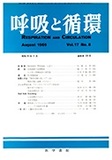Japanese
English
- 有料閲覧
- Abstract 文献概要
- 1ページ目 Look Inside
諸言
ショックの病態生理(Ⅰ)において,腸管領域の阻血が最も重篤であり,このときみられる高度の代謝性アチドーシスを補正しても,遮断解除後のショックに効果のないことを知った13)。又(Ⅱ)において経門脈的に交換輸血を行なったさいに,腸管領域阻血時の門脈血を注入するたびに,階段的に血圧の低下を示すことを観察した。したがってこのような門脈血中には,かなり強い血管作働物質が含まれていることが考えられた14)。この血管作働物質の検討を犬後肢の灌流法を用いて行なった。
The abundant evidence for increased vaso-active materials in shock has been demonst-rated. Among them, catecholamine is one of the most important vasoactive materials in shock and increased blood catecholamine levels have been observed in several types of shock, including the hemorrhagic, endotoxic, traumatic and anaphylactic varieties.
In the report 2, a stepwise drop of arterial pressure by exchanging blood transfusion was suggestive that the portal blood in a condition of serious gastrointestinal ischemia might contain some vasodilator. The present experiment was undertaken to find any dif-ference in vasoactivity between the portal blood and the systemic venous blood during the aortic occlusion or hemorrhagic shock.
Isolated hindlimb perfusion: Either side of the hindlimbs of heparinized dogs was isolated at the root of the thigh from the body except the femoral vessels. The femoral vessels were cut off after insertion of a canula of perfusion system. The perfusion system was consisted of a bubble flow type oxygenator, a pneumatic resistance for maintaining a constant pressure perfussion and a heat exchanger for keeping 37℃. The oxygenated blood was perfused into the femoral artery and venous blood from the femoral vein was returned to the oxygenator by the gravity.
Test blood was gently poured into the reservoir after discharding the same volume of original perfused blood. The mean perfu-sion pressure and flow were measured by the pressure transducer and magnetic flow-meter.
The hindlimb autoperfusion : The femoral artery and vein of haprinized dog were ex-polorated and circuit canula were inserted into the both vessels. Arterial pressure and venous flow were measured by a electric manometer and a magnetic flowmeter respec-tively.
In the isolated hindlimb perfusion, about one-third of perfusion blood was exchanged by the test blood. Both of hypovolemic shock blood and the femoral venous blood under the aortic clamping markedly reduced the venous return of perfusated hindlimb. In general the degree of reduction of perfused blood was depending on the duration of aortic occlusion and hypovolemic shock level. On the other hand, the portal blood under the aortic clamping did not reduce or slightly increased the perfusion flow.
In the hindlimb autoperfusion, 2 ml of the test blood was administered to the arterial side. Administration of the portal blood under the aortic clamping showed a transient incr-ease of the venous return of the perfused hindlimb and the femoral venous blood under the same condition reduced the venous retrun on the contrary. The former phenomena did not occur after administration of sufficient dosis of inderal to the femoral artery of experimental dogs and the latter phenomena also disappeared after administration of phe-noxybenzamine by the same procedure.
From the above experimentental results, the portal blood under the aortic occlusion may cause vasodilation due to some vasoactive substance, perhaps, different from catecho-lamine.

Copyright © 1969, Igaku-Shoin Ltd. All rights reserved.


